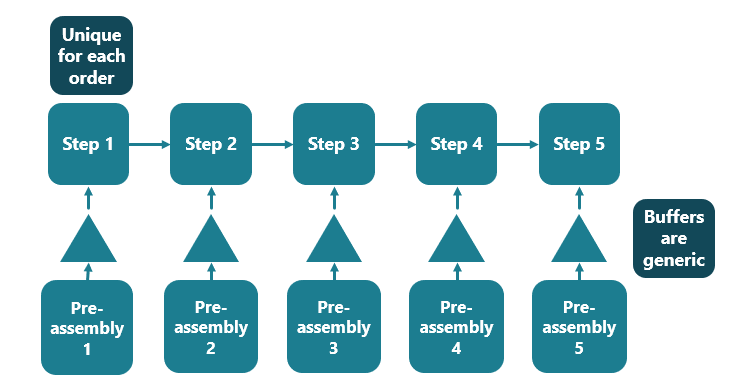In today’s rapidly changing markets, the ability to customize products has become a pivotal factor in determining consumer satisfaction. Enterprises across various sectors have embraced product configurations, significantly enhancing customer experience by tailoring products to meet individual preferences.
From luxury vehicles to innovative electronic gadgets, configuring products according to specific needs allows companies to stand out in competitive arenas. Such improvements have been further fueled by sophisticated tools that make choosing the right CPQ configurator essential for businesses that wish to streamline their offerings without complicating internal operations. Seen through the lens of manufacturing leaders, the mission remains to provide consistent value at every stage of the customer journey.
Product configuration enables a partnership between consumers and the brand itself. This co-creation process holds immense potential, especially in automobile industries, where companies like Tesla have illustrated the importance of consumer choice in shaping brand perception. The capacity for offering custom features differentiates a brand and drives forward its reputation as an innovator.
Beyond products like cars, even broader technological implementations like Industry 4.0 advancements underline the importance of efficient configuration systems in shaping today’s consumer markets.
Benefits of Efficient Configurations
Implementing an efficient configuration strategy extends benefits that transcend mere product customization, impacting various facets of a business. By building a streamlined process, companies can align their operations to manage variability effectively while optimizing their resources.
This is particularly crucial in sectors where consistent operational efficiency directly correlates with the quality and cost-effectiveness of the final product. A well-designed configuration strategy also enables companies to respond quickly to market changes, enhancing their agility and competitive edge.
Moreover, it allows for better forecasting and inventory management, reducing waste and ensuring timely delivery of products. Ultimately, this approach supports sustainable growth by balancing flexibility with operational consistency.
Improved Customer Experience
An efficient configuration system achieves more than just operational advantages; it elevates the customer experience. By refining the configuration process, businesses can reduce waiting times and error rates, providing customers with what they want without unnecessary delays.
This ultimately results in increased customer satisfaction, leading to higher retention rates, repeat business, and a fortified sense of brand loyalty. Additionally, personalized configurations allow firms to tailor offerings to individual customer preferences, enhancing their understanding of value.
As customers experience quicker and more accurate service, their trust in the brand grows, fostering a positive reputation and word-of-mouth marketing. A seamless configuration system satisfies immediate needs and builds long-term relationships with customers.
Common Challenges in Product Configuration
The journey to configuring products effectively is not without its challenges. One primary obstacle is managing vast and often complex datasets, which need synchronization across various business departments. Poor management of these data sets can lead to configuration errors that frustrate customers and increase return rates, causing operational inefficiencies and revenue loss.
Handling Options Overload
While providing a wide range of options is generally perceived as positive, excessively expanding the choices available can paradoxically overload consumers, making decision-making processes more complicated than beneficial. Balancing the variety without forsaking clarity requires strategic planning and understanding consumer behavior to ensure the decision-making process is streamlined and user-friendly.
Offering a curated selection based on customer preferences can help focus attention on the most relevant choices, reducing overwhelm. Additionally, implementing filtering tools or personalized recommendations can guide consumers toward the best options based on their needs, improving their experience.
Ultimately, the goal is to create an environment where consumers feel empowered to make confident, informed decisions without feeling paralyzed by too many choices.
Strategies for Effective Configuration Management
- Use of Advanced Software Solutions:Adopting sophisticated and adaptable software solutions is a cornerstone for managing product configurations efficiently. These tools facilitate customization while ensuring the configuration process remains seamless and aligned with market demands.
- System Integration: Establishing integration with existing operational systems, such as Enterprise Resource Planning (ERP) and Customer Relationship Management (CRM) systems, maintains consistency and accuracy across diverse business units, enhancing overall efficiency.
- Continual Training: Training initiatives for team members engaged in configuration management improve their proficiency and ensure that the business remains at the cutting edge of technology use.
Future Trends in Configuration Technology
Configuring technology is on the brink of transformation, with AI and machine learning technologies at its forefront. These advancements herald a new era of smart manufacturing, where processes can adapt dynamically to consumer demands. Such capabilities align with trends toward more intelligent business strategies, promising even more responsive and efficient product customization practices.
For businesses aiming to maintain competitiveness, staying informed about these technological advancements, understanding their applications, and integrating them into existing configurations will be crucial for future success. Bolstered by AI, the future will offer businesses an unprecedented ability to streamline complex configurations, driving efficiency, clarity, and enhanced consumer satisfaction.
Conclusion
The art of streamlining complex product configurations lies at the intersection of advanced technology, strategic planning, and customer-centricity. By adopting efficient configuration systems, businesses can improve operational workflows, enhance the customer experience, and position themselves as industry leaders.
Tackling challenges such as data management and options overload with innovative tools and processes ensures that companies maintain clarity and consistency in their offerings. Real-world examples from market leaders like Tesla and Dell demonstrate the power of combining customization with efficiency to meet evolving consumer demands.
As configuration technologies advance, businesses must embrace AI and machine learning innovations to remain agile and responsive. Integrating these technologies will simplify the configuration process and empower companies to deliver tailored solutions at scale. Organizations can create a seamless, personalized journey for their customers by prioritizing continuous improvement and leveraging cutting-edge tools while maintaining operational excellence and future readiness.
